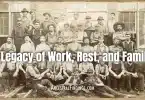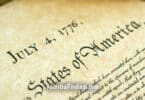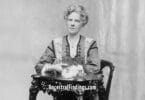Our story begins in the late 17th century with the French, who saw potential in this region as a key trade and military site. They built the first trading post in 1679, envisioning a stronghold that would oversee the rich fur trade routes. By 1726, this vision had solidified into the “House of Peace,” a name that belied the strategic military activities it would oversee against British encroachment and the intertwined alliances with Native American tribes.
The “French Castle,” a formidable stone structure built in 1726, stands to this day as a symbol of French ambition and colonial presence. It was within these walls that French officers plotted their maneuvers, traders bartered for furs, and meetings with Native American tribes shaped the policies of New France. The fort became a bustling center where different cultures met, traded, and sometimes fought.
The British saw the importance of this fort, too, and in the mid-1750s, as part of their larger strategy during the French and Indian War, they captured it. The fall of Fort Niagara marked the waning of French power in the region and the ascent of British control, a change that would have lasting implications for the future United States.
Fast forward to the American Revolution, and Fort Niagara found itself under the British flag, serving as a base of operations against American forces and a haven for Loyalists. It wasn’t until 1796, following the Treaty of Paris and a series of negotiations, that the British would finally hand over the fort to the burgeoning United States.
As the 19th century unfolded, the fort’s strategic relevance persisted. It changed hands again during the War of 1812 but was ultimately returned to American control. For years afterward, Old Fort Niagara served multiple purposes for the U.S. military, witnessing the nation’s growth and changes through the Civil War and two World Wars before retiring from active duty.
Today, Old Fort Niagara is a testament to the complex history of the region. It is a place of education and preservation, where the past is brought to life through reenactments, tours, and exhibits. It stands as a reminder of the diverse forces that have shaped the Great Lakes and the United States.
As we come to the end of our visit to Old Fort Niagara, we’re reminded of the layers of history that are present in every corner of the fort. From its origins as a French trading post to its role in the power struggles of early America to the peaceful educational site, it is today, the fort has borne witness to a vast and evolving story.
In wrapping up our journey to Old Fort Niagara, we’re not just closing the pages of a history book; we’re stepping out of a doorway to the past with a richer understanding of the stories that shape our world. This fort, which has stood watch over the changing tides of nations, reminds us that our history is a treasure trove of lessons and legacies. By preserving it, we gift the young and curious of today a path to walk in the footsteps of those who came before them, ensuring the adventures and tales of yesteryear continue to inspire and teach. This visit to Old Fort Niagara isn’t just a memory; it’s a lasting impression, urging us to explore, remember, and share the stories that are the foundations of our future.
Learn More:
“Old Fort Niagara: The Story of an Ancient Gateway to the West” by Claud H. Hultzén was published by the Old Fort Niagara Association. This book provides a detailed history of Old Fort Niagara, exploring its significance as a strategic point of interest throughout various historical periods.
“A History and Guide to Old Fort Niagara – 2007 Revised and Expanded Edition“ by Brian Leigh Dunnigan. This edition offers a comprehensive guide and historical overview of Old Fort Niagara, including its development and role over four centuries.






